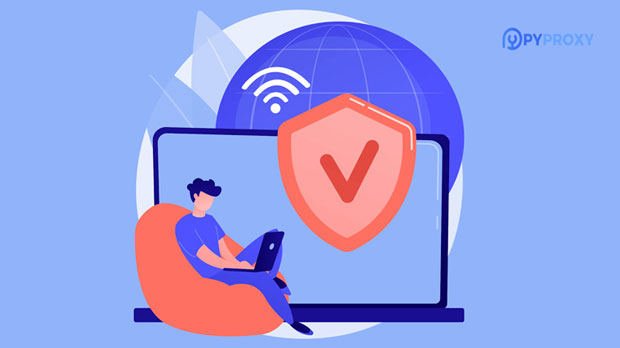Why does a proxy IP address affect the local network connection?
When using a proxy ip address, it can have a significant impact on local network connections. A proxy acts as an intermediary server that routes your internet traffic, masking your original IP address and potentially altering the way you connect to the web. This alteration may affect the speed, reliability, and even the accessibility of certain websites or services. The proxy server could introduce delays, change your perceived location, or cause inconsistencies in your internet performance, all of which influence how your local network operates. Understanding these impacts is crucial for users seeking optimal internet performance, whether for security, privacy, or accessing geo-restricted content. How proxy ip addresses Work and Their Role in NetworkingA proxy IP address works by sitting between the user’s device and the internet. When you send a request, the proxy forwards it to the target website or server. The target server then responds to the proxy, which, in turn, sends the response back to your device. This process helps conceal your true IP address while providing access to the content or services you need. However, in doing so, it introduces several points of interaction where network performance can be influenced.Proxies can be used for various purposes, including enhancing security, enabling access to restricted content, or balancing network load. Despite these advantages, using a proxy may lead to noticeable performance issues, such as slower connection speeds, packet loss, and fluctuating latency. These issues arise from the added complexity of routing traffic through an additional server and can impact the way your local network interacts with the internet.Impact on Latency and SpeedOne of the most common consequences of using a proxy IP address is the change in latency and speed. Latency refers to the time it takes for data to travel from the source to the destination and back. When you route traffic through a proxy, the distance between your device and the destination server increases, leading to higher latency. This can cause delays in loading websites, streaming videos, or gaming.Additionally, proxies may not be optimized for speed, especially if they are overloaded with multiple users or located far from the user’s geographical region. The additional layer of routing through a proxy can reduce the overall bandwidth available, leading to slower download and upload speeds. These changes are particularly noticeable when accessing content that requires high-speed data transfer, such as video calls or high-definition streaming.Impact on Reliability and Connection StabilityAnother significant factor that proxy IP addresses influence is connection stability. Since traffic is routed through an intermediary server, the risk of disruptions increases. The proxy server itself could experience downtime, which would disrupt your connection and lead to intermittent access to the internet. Furthermore, proxies might introduce packet loss, where parts of the data sent between your device and the internet fail to reach their destination or are corrupted. This can cause problems such as slow page load times, timeouts, or poor-quality video streaming.Additionally, proxies might not always handle the volume of traffic properly, leading to congestion or throttling. This happens when the proxy becomes overloaded with requests from many users, slowing down the overall performance of the network. These reliability issues are often more noticeable in situations where real-time interaction is required, such as online gaming, video conferencing, or VoIP calls.Geographical Location and Access to ContentA proxy can also impact local network connections by changing your perceived geographical location. Since the proxy server acts as an intermediary, it assigns your internet connection an IP address from a different region or country. This is useful for bypassing geo-restrictions on certain websites or accessing content that might be unavailable in your actual location. However, this change in location can introduce inconsistencies in the way your local network interacts with specific content or services.For example, some services may restrict access to certain features based on your IP address, such as content streaming platforms, online stores, or even banking services. By using a proxy from a different country, you may be able to access content that would otherwise be unavailable. However, the proxy’s location could also lead to unexpected delays in accessing content or even result in an inability to access certain services altogether if they block proxy traffic.Security and Privacy ConsiderationsWhile proxies are often used to enhance security and privacy, they can also introduce vulnerabilities that affect local network connections. By masking your true IP address, a proxy can help protect your identity from being exposed to websites, hackers, and third parties. However, using a proxy also creates a dependency on the proxy server itself. If the proxy is compromised, it could expose your data or provide access to malicious entities.In some cases, proxies might fail to encrypt your data traffic properly, which could lead to data leakage or make your connection more vulnerable to man-in-the-middle attacks. Additionally, malicious proxies can hijack your connection and inject harmful content into the traffic you are routing through them. These security risks highlight the importance of choosing reliable and secure proxies, but even then, proxies may not be foolproof in protecting your local network connection.Impact on Local Network ConfigurationA proxy server may also affect the configuration of your local network. For instance, network administrators may need to configure specific settings on routers or firewalls to allow traffic to pass through the proxy. This configuration can introduce additional complexity and create potential points of failure. If the proxy settings are not correctly configured, you may encounter issues such as inability to connect to the internet, slow speeds, or inconsistent behavior in accessing certain websites.Moreover, the use of proxies in a corporate or larger-scale environment may involve implementing specific network protocols and tools to ensure proper communication between devices. This can further complicate the network setup, especially when proxies are used to manage access to internal systems or external resources. Inadequate configuration or troubleshooting can lead to network disruptions and inefficiencies.Conclusion: Navigating the Trade-offs of Proxy UsageIn summary, while proxy IP addresses offer significant benefits in terms of privacy, security, and access to geo-restricted content, they can also affect local network connections in various ways. From increased latency and decreased speed to reliability issues and geographical constraints, proxies introduce complexities that need to be carefully managed. Understanding these impacts is crucial for anyone relying on proxies, especially in professional or high-performance environments where network performance is critical.To mitigate the potential downsides, users should consider the specific use case for the proxy, ensuring that the benefits outweigh the possible challenges. Additionally, selecting a reliable and fast proxy service, optimizing local network settings, and staying aware of security risks are essential steps in ensuring that proxy usage enhances rather than hinders internet performance. By balancing these factors, you can effectively navigate the trade-offs of proxy usage and maintain a stable, fast, and secure local network connection.
2025-01-23

























































